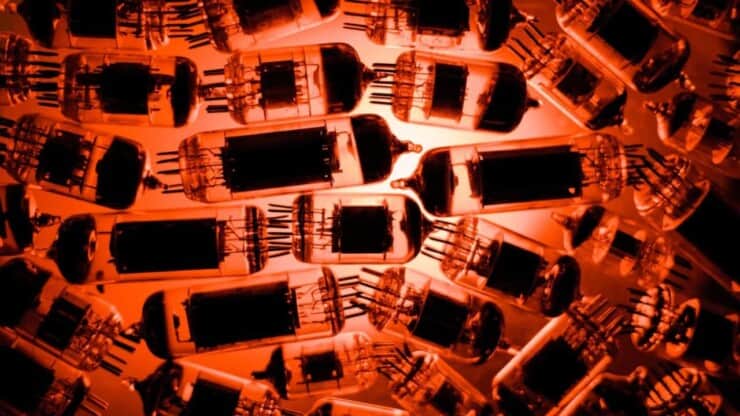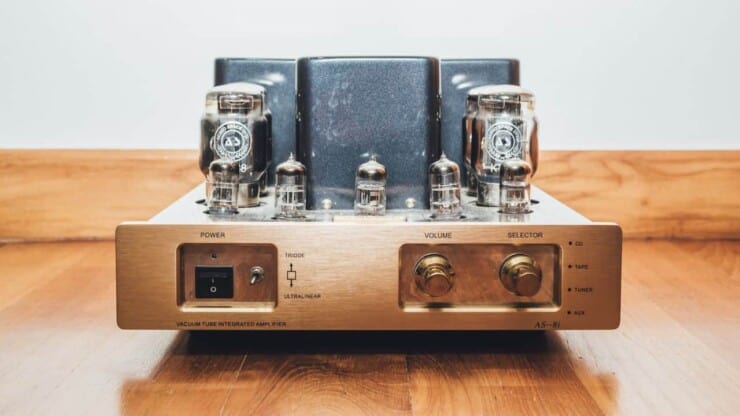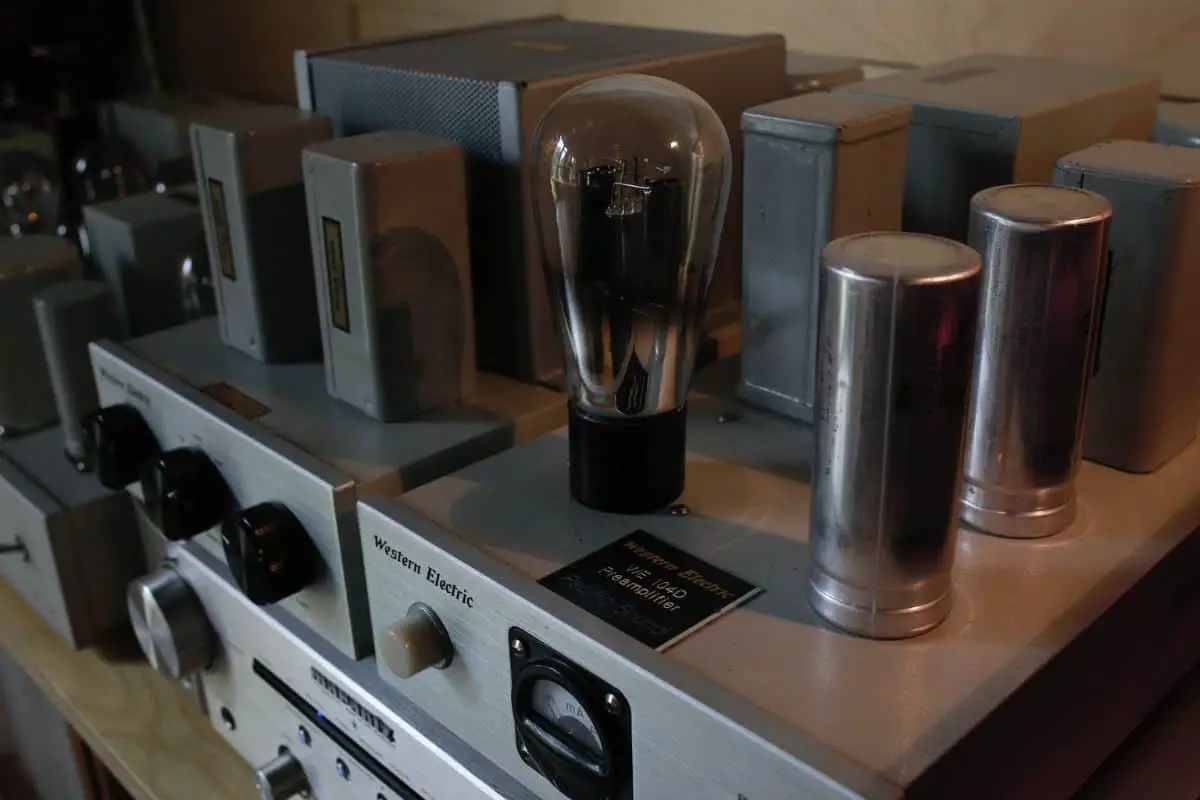Have you bought a guitar amp tube, and you’re unsure about how long do guitar amp tubes last? If so, then you should be thankful as you’ve landed on the right article!
Guitar amp tubes last around 2 years on normal use, although you’ll need re-tubing after 6 months of heavy use. Moreover, it’ll also depend on how loudly you’re playing and for how long.
In this article, you’ll get to know all about how long do guitar amp tubes last, how to replace tubes in a guitar amp, why you have to change the tubes, how to know if your amp tubes are bad, and more. Continue reading to get all the answers that you’re looking for.
>>> Click here to read our review about the Top 15 Best Tube Amps <<<
The lifetime of guitar amp tubes
How long do tubes last in guitar amps will depend on how hard it is used in the amp circuit. Some circuits use tubes considerably harder than others, and there are guitarists who play harder than others. Power tubes can last for years in a light-playing situation, whereas they might only last 6 months or so in heavy playing conditions. It’ll depend on how loud you’re playing and for how long.
Moreover, if you’re not correctly matching the impedances, it’ll put a strain on the power tubes and wear them out faster. Some people prefer keeping the amp on all day, and this reduces the life of the tubes greatly.
The bad news for you is that these tubes don’t have a definite life span, similar to light bulbs. Preamp tubes will last significantly longer than power tubes. Basically, preamp tubes will last almost 2x as long as the power tubes. There isn’t a definite lifespan, so nothing can be 100% sure.
Why do you need to change guitar amp tubes?
There are two primary reasons why amp tubes need to be changed. The first reason is that these tubes will simply burn out, which causes a malfunction with the amp. For instance, with the JCM900 Series amps, there’s a failsafe fuse built-in for indicating power tube failure. The tubes must be changed immediately such that the damage to the transformer can be avoided. Tubes don’t actually have a definite lifespan and could burn out at any time. This is why most of them come with a 90-day warranty on them.
The second reason and most important one is to improve the overall tone and performance of your amp. The effect the amp tubes have on your amp will be similar to the effect that strings have on the guitar. The more often you’re playing and the more aggressively you’re playing, the faster your amp tubes will wear out.
Playing hard and loud will cause the tubes to lose power and tone long before they eventually die. This entire wear-down process is gradual. Most people are unlikely to recognize the difference in tone until new tubes have been put in and authorized. It is always stated that if a power tube goes, all of them will need to be replaced. This way, all of them wear out over time equally. This helps you get a more over tone, and backup tubes are a great option.
A common problem that you might have seen with tubes is a microphonic preamp tube. It is the culprit that causes the high-end squealing even without the guitar plugged in. A great way to check this would be unplugging the amplifier, removing the back panel, turning the amp back on, and letting the tubes warm up. Take a pencil and tap each preamp tube to see which one of them has a loud ringing/crackling sound. They’ll ring to a similar degree, but the bad one out of the bunch will be far more noticeable. You’ll need to replace that one immediately.
A second way of finding it will be to pull out the suspected tubes and then replace them with new ones. This is simple, as you’ll know there is no bias procedure for preamp tubes. Even beginner guitarists can do it without hurting themselves, the amp, or anything else. Moreover, it’s always a great idea to have replacements ready for gigs anyway.

How to replace tubes in guitar amp?
Whether you’re trying to breathe new life into a tired amp or repairing a broken amp, replacing tubes is important. Replacing tube amps can be a lot of fun and an easy way of upgrading your guitar amp’s tone. Here is how to replace tubes in guitar amp – be it power amp tubes or preamp tubes.
Safety first
The first thing that you’ll need to consider replacing tubes is how you’ll be doing it safely. It isn’t any more dangerous than changing a light bulb. However, you’ll have to be careful and do it in the right way. Ensure that you’re powering down the amp, unplugging it, and giving it enough time to cool down before you start. When used for a long time, tubes can get pretty hot.
Preamp tubes
For changing preamp tubes, you’ll require a screwdriver and a little know-how of dealing with them. On many amps, you’ll have to remove the back panel first. However, don’t worry as this won’t void the warranty. Almost every manufacturer expects you to change the preamp tubes at some point. You still need to check the instruction manual to do it correctly.
With preamp tubes, you won’t have to worry about biasing or using matched pairs, as you’d do with power tubes. As long as the new tube is the same model as the one you’re replacing, you’ll be good to go. You can also mix and match different brands. Sometimes, this is the best way of finding a tone that is totally your own.
In certain amps, the preamp tubes happen to be in a chain. In such an arrangement, the tube makes the guitar louder and louder and louder. The tube closest to the input jack will be the first one in the chain. It’ll be a great place to begin if you’re experimenting with different amp tubes. The nuances of the tube are most noticeable as it’s pre-amplified by each of the subsequent tubes of the chain.
How to replace preamp tubes in an amplifier?
- Once the amp has cooled down, remove the back panel if necessary. This is where your screwdriver will be beneficial.
- If you’ve got shiny aluminum tube covers, remove them by pushing up and then turning them counterclockwise.
- Now, grip the base of the tube as close to the chassis as you possibly can. Most tubes will be in there pretty tight, so you should ensure that you’ve got a really firm grip.
- Wiggle the tube from side to side gently while pulling it away from the chassis. Applying steady, yet gentle pressure will be key.
- Ensure that the pins are properly aligned before you push the tubes back in. Again, apply gentle pressure when you’re reinserting the replacement tubes.
Power tubes
When replacing power tubes, you’ll need to take a few extra considerations. Firstly, some manufacturers don’t actually want customers to change the power tubes. So, you’ll have to check the manual for any information about the warranty before you unintentionally end up voiding it. Secondly, most power tube sockets will have tabs on the side holding the tube in place. You’ll need to hold the tabs down for getting the power tube out. The last and most important thing here is to consider biasing when replacing power tubes. There is a lot of voodoo that comes with biasing.
However, it isn’t as mystical as some people may think. Biasing is essentially the process of adjusting the voltage for each power tube such that they’re doing the same amount of work.
How do you know if the amp has to be rebiased? The best way of knowing that would be by reading your instruction manual. In general, most amps having less than 30W are cathode biased and don’t have to be re-biased. Amps more than 30W are generally fixed-biased. Moreover, they will have to be re-biased by a technician unless the manual mentions specific re-biasing instructions. A bias calculator will be a handy tool to use if you’re doing it yourself.
Rules to consider when replacing power tubes
Here are a few important rules to remember when changing power tubes –
- Read the owner’s manual and pay close attention to anything that mentions the words “biasing” and “warranty”.
- Remember to replace power tubes in matched pairs. If the amp has four or more power tubes, you’ll just need to replace two tubes at a time. However, their ratings will have to match each other and not necessarily the other pairs.
- If the power tubes have failed, there’s a big possibility that your HT fuse blew. Some fuses are present inside the chassis (especially in Marshall and Blackstar models) and aren’t user-replaceable. You’ll need to check the instruction manual to be sure.
Do guitar amps wear out?
The amplifier is essentially a combination of a number of components, and these components do wear out. As a result, you can say that amplifiers also wear out. One of the first things that might break is the capacitors, especially the ones in the power supply. The reason why this may happen is stress and higher temperature. As amps are designed to be used, there isn’t anything that you can actively do to prevent it. The most you can do is avoid high temperatures and take care of the amp.
The easiest way of dealing with dried-out capacitors would be to replace them. Fortunately, changing capacitors in the amp is rather inexpensive. Even if it happens, you won’t actually have to spend a huge fortune replacing them.

Secondly, transistors in the output might cause you problems as well. Transistors can easily wear out if you keep on using them beyond their ratings. Speakers will have a huge impact on the overall lifespan of the transistor. Even if you choose to replace the problematic capacitors, rectifiers, and transistors, it’ll still be a part of normal maintenance that you’ll need to carry out every couple of years.
All this applies to solid-state amps. If you’ve got a tube amp, then the valves will be the crucial components that wear out over time. Replacing valves is very similar to replacing the strings on a guitar. You’ll need to do it if you want your amplifier to stay in good shape and give amazing tones. With high-quality components, your amps will be capable of lasting for a long time.
How long can an amplifier’s speaker last?
As with other parts of the amp, your speaker will last longer the more you take care of them. Playing the guitar too loud will put extra stress on them while lowering their lifespan. If you’ve got a high-quality speaker, it could possibly last 40-50 years. Naturally, you’ll need to take good care of it and do regular maintenance. On the other hand, low-quality speakers will have a lot shorter lifespan. You can expect your low-quality speakers to last around 10 years or so if they’re used daily.
Now, the main problem that you might have is playing loud music. By loud, it doesn’t mean loud to your ear but loud for the speaker. If you’ve got a high-quality speaker that’s small, a volume that is normal for you might be a lot for the speaker to handle.
Even if you want to blast heavy metal through your speakers, you’ll need to find something that is capable of handling the load. As long as you aren’t cranking the volume to the max, your amp and the speaker will be safe. When talking about maintenance, you won’t have to do regular monthly or even annual maintenance checks. The speakers in your amps are much more durable. You’ll need to do a casual check and look if everything is good once every couple of years.
Will it be bad to leave the amp on all the time?
As opposed to what many think, leaving your amp on all the time might be a great idea in the end. At least it is one in theory. When you turn on an electronic device, it takes a small piece of thrashing. Turning electronic devices on and off can gradually destroy them. Usually, a regular light bulb dies when you turn on the light. It isn’t often that it gets broken for no reason. Similarly, your amp will be a lot better if it’s plugged in all the time. The capacitors will last longer if the amp is always turned off. However, what will even be the point of them.
Turning on your amp once a day isn’t a problem at all. Turning it off whenever you aren’t playing is absolutely normal. However, you should avoid doing it multiple times per day if you want to prolong its lifespan. The main problem with this will be your electricity bill. Keeping your amp on all the time will undoubtedly spend a lot of electricity. This is why many guitarists dislike the idea of leaving their amps on when they aren’t being used.
Further, if you have active pickups, the battery will run out if you’re leaving the guitar plugged in. Besides battery and electricity, there is absolutely no harm in leaving the amp on all the time. You can leave the amp on if you’re playing daily, and then turn it off if you’re away for a few days.
Can you leave a tube amp on?
The biggest problem with tubes is heat. Heat has long been the enemy of electronic devices. If your amplifier has great ventilation, then leaving it on will not be an issue. If your amp has a standby mode, you’ll have to avoid leaving it on for a long time. While standby is a great feature, never leave it like that if you’re not planning on playing the guitar. The best-case scenario would be that one of the capacitors has burst. However, problems can get a lot more serious than that.
Tubes are far more fragile than solid-state amps. Leaving a tube amp for too long can end up frying the tubes. Moreover, you’ll also want to avoid paying high electricity bills for no reason. The best idea would be to find the middle ground. If you’re playing for 15-20 minutes and having a short break after each session, then you can leave the amp on for a while.
This way, you’ll be able to avoid stress on the tubes and components. On the other hand, if you’re not planning on playing for a day or two, you can turn it off. This will help you avoid overheating the tubes.
How to know if your amp tubes have gone bad?
If some amp tubes have gone bad, you will definitely notice it. However, if you don’t, then there are a few clear signals that the tubes need replacing.
For preamp tubes –
- Feedback like noise
- Hissing sounds
- No sound in certain amp modes or certain channels
- Pop and crackling sounds
For power tubes –
- Lower volume output
- Muddy low-end response
- Pop and crackling sounds
- Volume swells
- Buzzing
For rectifier tubes
- No sound output in channels where a rectifier tube was used
How to make your amp tubes last longer?
There is not really much that you can do for your amp tubes to last longer. Their design comes with a short lifespan integrated. Moreover, it’s part of what makes them sound truly magical. Playing at a lower volume will stress them less while giving them extra hours of life. It is also stated that warming up and letting the tubes cool down properly makes them last longer.
Take the usual care of the amp tubes as you would do with any other electronic device. However, ultimately, they’ll die out, and you’ll need to replace them. There isn’t a lot that you can do about it. It is recommended that you should take your amplifier to a technician at least once every year for a checkup. Get the amp checked out and ask them about the condition of your tubes. Moreover, ask if there is anything that can be done to take better care of the amp tubes.
Conclusion
Thank you for reading. Hopefully, now you know a lot more about how long do guitar amp tubes last, how to replace tubes in a guitar amp, why you have to change the tubes, how to know if your amp tubes are bad, and more. Under normal usage, guitar amp tubes can last around 2 years or so. But if they go through heavy usage daily, you’ll need to get the re-tubing done every 6 months. How long do tubes last in guitar amps will depend on how loudly you’re playing and for how long you’re playing.



